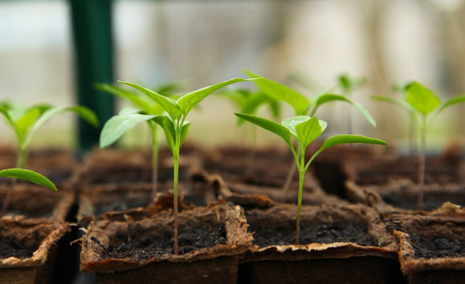 Plant Biology
Plant Biology
Be prepared: How do baby plants protect themselves before escaping the seed?
A continuous protective cuticle formed around the embryo is a prerequisite for plant survival in dry environment. We show that a molecular dialogue between the embryo and the surrounding nutritive tissue in the seed ensures that the cuticle is gap-free, thus maximizing the chances of seedling’s survival after germination.

Most terrestrial ecosystems are currently dominated by seed plants, a large family encompassing conifers, deciduous trees, grasses and many others. One explanation for their incredible success comes from the structure that nourishes and protects the embryo during its early development - the seed. Inside the seed, the embryo is entirely surrounded by other tissues that create humid and controlled environment. However, during germination, the embryo suddenly encounters dry atmospheric conditions, which can rapidly dehydrate the water-filled tissues of the young plant.
To prevent this water loss, plant’s organs are covered by a waterproof coating called cuticle. The cuticle is absolutely essential for plant survival and any defects in this structure often lead to death, particularly when plants are exposed to dry environments. Therefore, before the embryo germinates, it must form a complete cuticle in order to survive. But how does the developing embryo know whether its cuticle is complete and functional?
To address this question, we studied a small weed called Arabidopsis thaliana, which is commonly used by geneticists. We identified several plant lines producing impaired embryos that produce cuticles full of gaps. Studying these lines, which are called mutants, allowed us to understand why their cuticles contain gaps and thus to better understand the process behind the formation of complete cuticles. After early analysis, we found that these mutants produce embryos that cannot perceive whether their cuticle is intact or not. These mutants lack functional versions of several different proteins. We looked where these proteins normally localize, what their functions are and how they interact with each other. This information allowed us to propose a model of how the production of an intact and functional cuticle is achieved.
In this model, the embryo emits a chemical signal, called messenger, but in an inactive form. This inactive signal can diffuse through gaps in the cuticle into the surrounding nutritive tissue of the seed. There, the inactive messenger is converted to its active form, which can re-enter the embryo through the same cuticle gaps. The active messenger is immediately detected by the embryo, which will in turn start to fill the cuticle’s gaps. Once the cuticle is intact, the inactive messenger is retained inside the embryo. As a result, the embryo perceives the information that the cuticle is gap-free.
This bidirectional molecular dialogue between the embryo and the surrounding tissue ensures that a gap-free and fully functional cuticle is produced before the germination starts. The emerging embryo is thus efficiently protected from drying environments, dramatically increasing its chances of survival during the first crucial minutes and hours of its post-embryonic life. Currently, our study is limited to the flowering plant Arabidopsis. Further studies will be necessary to understand to what extent this mechanism is shared by other seed plant species. Elucidating the mechanism that the seed plants ancestor selected to ensure cuticle’s integrity will reveal the origin of a critical element in the evolution of functional seeds.
Original Article:
Doll N, Royek S, Fujita S et al. A two-way molecular dialogue between embryo and endosperm is required for seed development. Science (1979). 2020;367(6476):431-435.
Next read: The seed’s hidden defense arsenal: using bacteria to defend against disease by Haruna Matsumoto , Tomislav Cernava , Mengcen Wang
Edited by:
Dr. Monika Stankova , Senior Scientific Editor
We thought you might like
More from Plant Biology
Unravelling the Secrets of Pine Roots: A Tale of Nutrition and Adaptation
Oct 20, 2023 in Plant Biology | 3.5 min read by Rafael Cañas , Francisco OrtigosaStressful memories help plants resist caterpillars
Oct 2, 2023 in Plant Biology | 3.5 min read by Samuel Wilkinson , Adam Hannan Parker , Jurriaan TonDecoding the genome of a jackfruit that grows all year round
Sep 6, 2023 in Plant Biology | 3.5 min read by Tofazzal IslamLife after logging: the tale of recovering tropical forests
Aug 21, 2023 in Plant Biology | 3.5 min read by Maria Mills , Terhi RiuttaEditor's picks
Trending now
Popular topics


